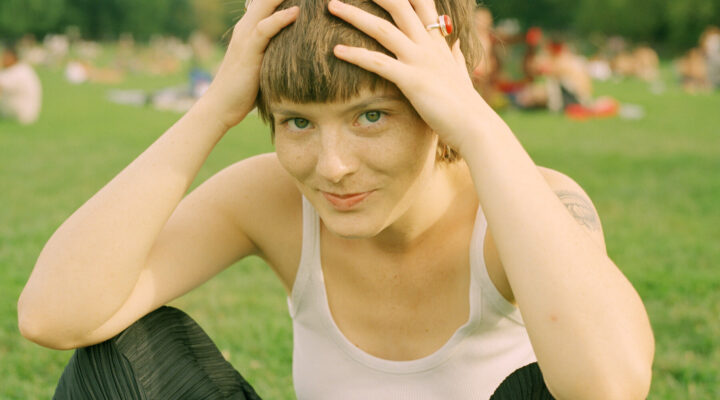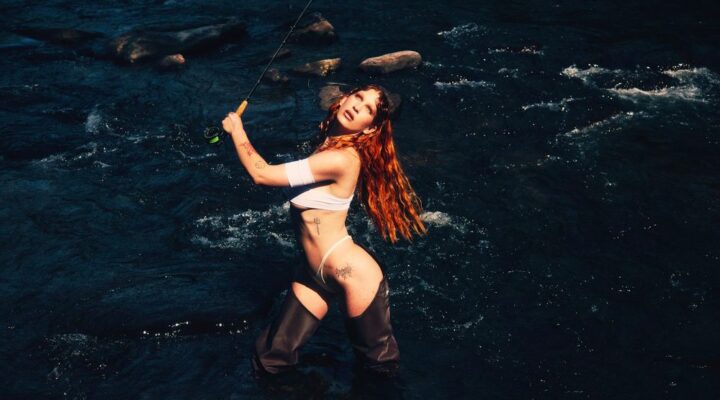Frames by Nicolás Castagno
Interview by Floor Kortman, images by Nicolás Castagno
For the April edition of our ongoing, Pllant-curated immersive environments, we’re hosting Amsterdam-based visual artist Nicolás Castagno. The Swedish coffee brewer by day, visual artist by night casts the kaleidoscopic glow of his hand-painted slides over OT301’s big, black box next Thursday, 24 April.
I understand your day job is being a coffee brewer/director/superstar, so my first question may be a difficult one: How would you introduce yourself, and how would you introduce yourself as an artist?
Yes, this is a difficult one. I guess I am someone who avoids being defined by “external’ processes, which is impossible. So, I tend to keep my mind more oriented to the idea of the future, the things to come and the possibilities of change. Even though my everyday life is usually pretty stable.
As an artist I like to make place for what I call ‘spaces of imagination’ for the individual that encounters the images I project.
How did you go from being a coffee brewing champion from Sweden, to making painted slide visuals for weird bands?
I actually started working on slides long before my career as a coffee professional. I started Spore Project together with a good friend from University in Buenos Aires, Argentina. While studying sociology we would take breaks and develop an artistic idea that involved translucent materials and forgotten slide projectors. It so happened that we mostly worked with bands that were also our friends, who were weird, like ourselves. Our ultimate idea has always been to make installations and work with theatre performances, a kind of bigger, interesting thing.
I started reading your manifest on the Spore Project, by way of google translate, and then the title read: This project has no manifest. Can you explain what you’re trying to do with this project? And perhaps, why you wrote a manifest for something that has no need for a manifest?
Well, it’s a non-manifest. It doesn’t talk about any subject, collectiveness or action plan. Spore Project spaces of action are processes of subjectivation – imagination / creativity / individualization / interaction – which are approached through the creation of images that use the aesthetic qualities of several organic compounds. These qualities usually escape such social processes, as they are unseen structures. Spore Project performs through aesthetics that have the capacity to jump or transfer themselves like spores developing new structures of sense in diverse physical spaces.
The images of Spore Project contribute to the transformation of public spaces as spaces of meaning, giving the individual a key role in the production and transformation of these meanings. The spore images search to give place to the production of new meanings while appealing to the emotive in its encounter. Spore Project is an interruption in the network of the society of the spectacle, breaking out practices of perception and consumption that characterize the spectator’s role during diverse visual performances.
So, for technical specification, you work with an analogue projector, how did you come about this, and was it difficult to master?
My friend Fernando saw some student projecting hand drawn signs from a projector and we decided to exploit that idea. There are no rules, the goal is to use any kind of translucent material that is thin enough to make it into a projector in a 34x25mm format and create visual structures and forms. Lately I’ve been working a lot with different types of plastic and glass paint. But painting is just one method, overall I would say it’s more a sort of micro-collage. For the projection I am using one of the last “slide” projectors developed in the market, a Rolleivision MSC 315. This is a double objective projector that allows me to “blend” the images and create a continuous show without black-outs.
How ‘live’ are your visuals? Are they painted on the spot, or do you prepare and know beforehand what you’ll be doing or is it all improvised?
No, the set is pre-arranged before the show by me and the slides are already created. In this case, I will listen to the music from a record and think about a visual concept for it. But of course I try to follow what the band is doing live and contribute to the atmosphere they are creating. I guess it is as “live” as me changing the slides and managing the durations of blending. There is very little automatization. And as I said before, the production of meaning happens in the encounter projection-individuality rather than in any post-modern process of instantaneity.
Are you currently working on something exciting with your art, and what can we expect from you in the future?
Lately I’ve been making light boxes from macro pictures of the slides. Everything is almost ready but it has been paused by the opening of my coffee bar. I have a wide collection of slides that I would love to project in Amsterdam. I’ve also started digitalizing parts of the slides and I hope to combine the analogue and digital supports in future projections.
Nicolás showcases his work for Frames at OT301, Amsterdam on Thursday 24 April during the Excepter show. The event is free for Subbacultcha! members.



